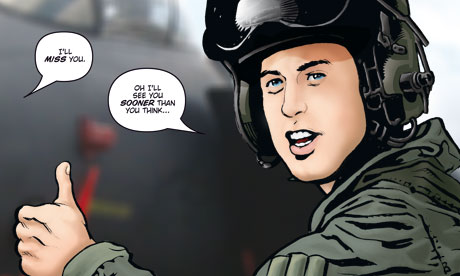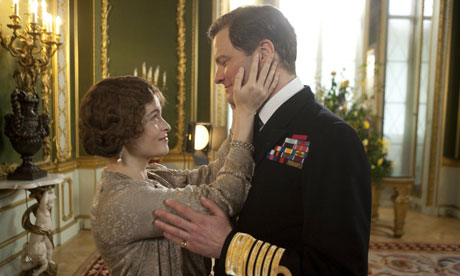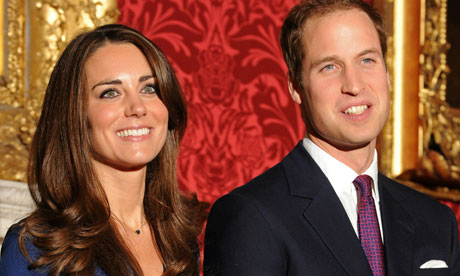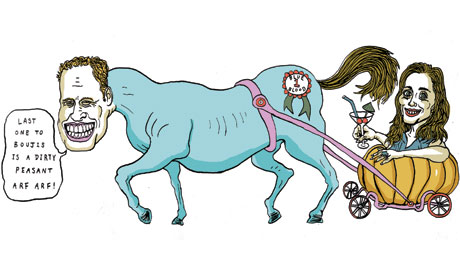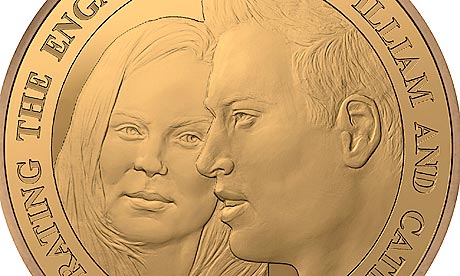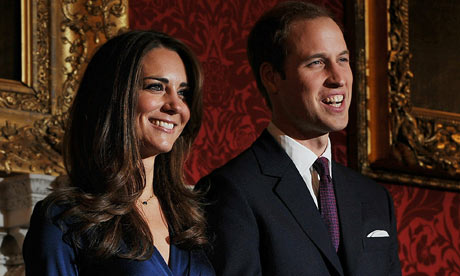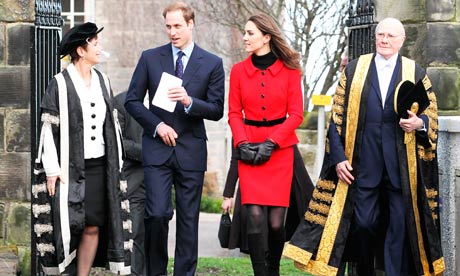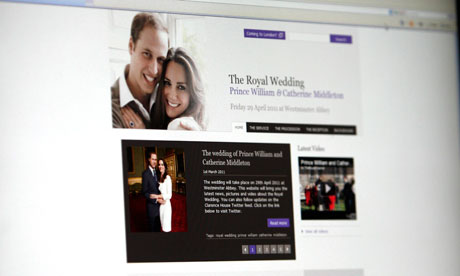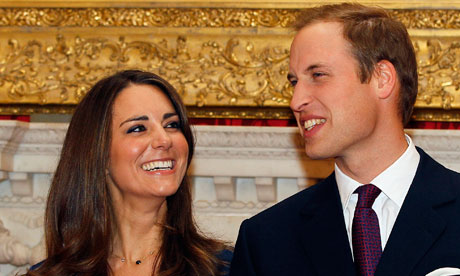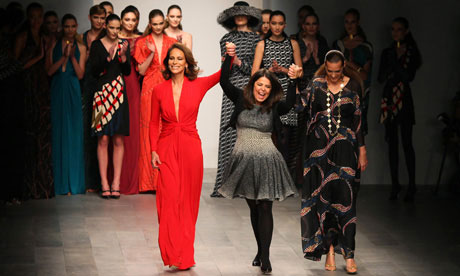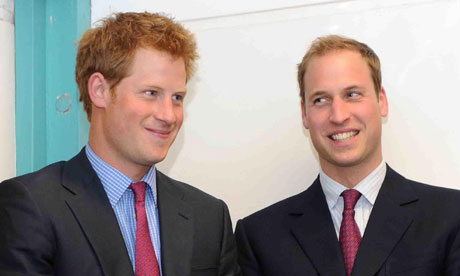Kate Middleton was introduced to the staples of lifelong royal employment when she launched her first boat and undertook her first walkabout.
Aides may have chosen a deliberately low-key venue for her initiation: an RNLI station on Anglesey, north Wales, where she and Prince William live in a secluded rented farmhouse.
But the 2,000-strong crowd gathered in a chill wind at Trearddur Bay for the couple's first official joint engagement since their wedding was announced, it demonstrated what she can expect as a full-time member of "The Firm".
She smiled; they cheered. She sang the Welsh national anthem in Welsh; they shouted their approval. She poured champagne on the bow of the new lifeboat Hereford Endeavour; they cheered.
She shook hands, accepted posies, cards, drawings, framed photographs and numerous congratulations on her forthcoming wedding; they shivered but continued to clamour for more.
"She's fallen into it well," said David Frost, on holiday from Bolton with his wife and their six-year-old grandson, Cameron.
All in all, royal advisers will undoubtedly agree, it was a triumph.
In planning Middleton's induction, aides have been anxious not to repeat past mistakes. Diana's introduction to Wales was an arduous three-day official tour on the royal train after her honeymoon, an ordeal which, though she smiled throughout publicly, reduced her to tears in private and pleas to her husband she could not face another crowd.
Charles's arrival for a nine-week stint at the University of Wales, before his 1969 investiture as prince of Wales at Caernarvon, was greeted with Welsh and Scottish nationalists clamouring for "home rule" and waving placards in Welsh reading "Go Home Charlie".
But Middleton has been living part of each week on the island since William's stationing at nearby RAF Valley as a search and rescue pilot.
"She is a local now. We've heard she was in Argos the other day," said Megan Dixon, 10, from the Trearddur Bay village, who with her mother Liz, and friend Nathan Morris, 13, waited for more than four hours for the couple. "Is he the ginger prince?" inquired Nathan.
"Oh, no. I know the one," he added. "He's often in the burger bar at Valley."
After bidding the crowd "prynhawn da" – good afternoon – William introduced his fiancee in a brief speech as "someone who is not only about to join the family, but is also about to become an "Anglesonian". This elicited more cheers, but bemusement for some members of the crowd unfamiliar with the term. "No such word, absolutely not," insisted Dafydd Thomas, in the crowd.
"Never heard of it," said Kalleen Gulliford, another islander. "Mind you, lovely they both sang the anthem in Welsh. Just lovely. I said to her 'Croeso i Sir Fon' [Welcome to Anglesey]. But I don't think she understood. She just smiled."
It seemed most of the 2,000-strong village had turned out, with the event also attracting veteran royal watchers from all over Britain. There was Colin Edwards, 70, a familiar face during Diana's engagements, who gave Middleton a framed photograph of the late princess with a young William and Harry taken in 1989, with the boys wearing green short trousers. "Oh my goodness. Look at his knees. Fantastic," said Middleton as Edwards, from Denbighshire, stooped to kiss her hand.
Winning over Wales has long been a major issue for royalty ever since Edward I invested his son as the first British monarchy's Prince of Wales in 1301.
Eager to cement the relationship, Middleton, who may on Charles's accession become Princess of Wales, wore a Welch Fusiliers badge in the designer beret she chose for the occasion.
After watching the launch of the Atlantic 85 lifeboat, supping tea and tucking into bara brith fruitcake supplied by the local Ladies' Guild, she stopped to show it to the crowd.
Welsh nationalists may refer to Middleton as a "future Queen of England", but the nearest the vast media pack got to any dissent was when local resident Wyn Roberts admitted he did not know the royal couple were coming, and, what's more he didn't much care. It's the start of long journey for Middleton.
William and his fiancee next return to St Andrews University where they met, and where the prince will launch the University's 600th anniversary appeal. It was 10 years ago that William arrived as an awkward freshman, awed by the large media presence. "I'm only going to university. It's not like I'm getting married, though that is what it feels like sometimes," he said at the time.
